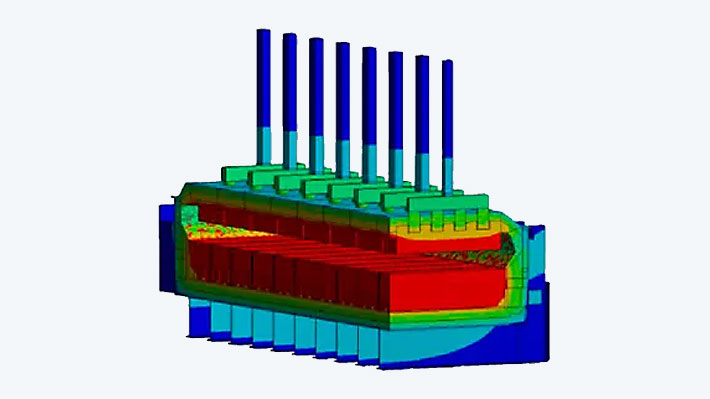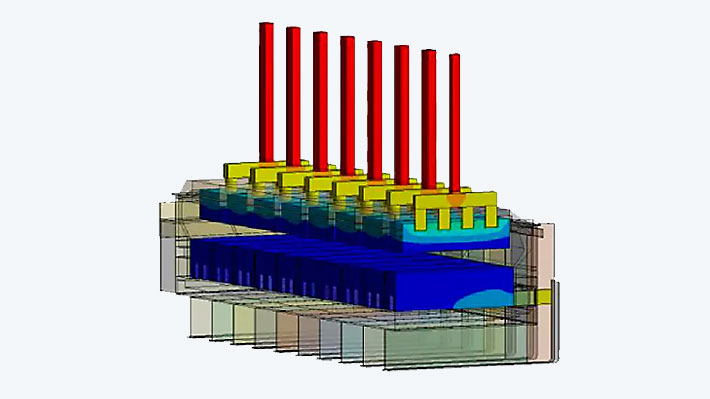
Higher energy efficiency of aluminium electrolysis furnaces
Specialist field: Heat Transfer, Multiphysics, Scalability of simulationsIn cooperation with Hydro Aluminium Deutschland GmbH CADFEM developed an automated simulation process for the analysis of electrolysis melting furnaces. As a central goal of the joint customization project, manufacturing experts should also be able to use the solution successfully in the everyday business of furnace configuration without simulation knowledge.
Summary
Task
Electrolytic melting processes are used in hydrolytic melting processes for the production of aluminium. Reducing the high energy consumption required for this is one of the outstanding tasks in the further development of the production facilities. With the help of numerical simulation, energy savings of up to 25% are to be achieved in the long term.
Solution
The existing simulation processes were automated in order to achieve the objectives quickly.
For this:
- replaced simple geometry models by standardized detailed simulation models
- Model construction and setup of the electrolysis process automated
- developed a graphical user interface for simple simulation control.
- 300 parameters defined to identify the best possible furnace configurations.
Customer benefits
In addition to optimized furnace designs with reduced energy consumption, the main focus is on increasing simulation quality as a result of automation. Thanks to the simple user guidance, even employees without simulation experience are now in a position to optimize the systems. Since all employees access the same simulation process, a robust analysis result is guaranteed.
Project Details
Task
As one of the world’s leading suppliers of aluminum, Hydro strives to continuously reduce the high energy consumption of the electrolytic melting process for aluminium production. Hydro's latest plants use less than 12.5 kWh to produce one kilogram of aluminium (global average: 15 kWh). In the long term, energy consumption is to be further reduced in the direction of 10 kWh/kg by means of new simulation driven designs.

Customer Benefits
The automated processes enable even the colleague less familiar with simulation to create a furnace model and then compute all standard tasks. This allows simulations to be used to optimize furnace design throughout a wide organization and to increase cost savings. In addition to shorter processing times, communication among the designer, simulation engineer and process specialists has been streamlined.
Further advantages:
- The automation also allows complex simulations to be carried out,
- the robustness of the entire process has been significantly increased and
- the quality of the results was improved due to the higher level of detail.

Solution
For a high-performance simulation tool like Ansys Workbench, the previously used simplified geometry models first had to be replaced by construction-related simulation models. In cooperation with CADFEM, the model setup of the furnace and the simulation of the electrolysis process were automated in parallel. The parametric simulation model is generated using an automated CAD interface, which serves to define the geometry and is controlled via a graphical user interface. Based on parameter studies, the user is now able to adjust the heat flow with minimum energy consumption, whereby 300 parameters can be changed per furnace model.
Images: © Hydro Aluminium Deutschland GmbH




